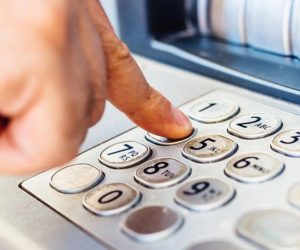How Does a Chip Make a Credit Card Safer

The system you use to transact your credit card payments is only as good as its security features. Take preventive action now to ensure that both your customers’ sensitive data and your business’s reputation are protected.
EMV COMPLIANCE
In October of 2015, the credit card industry rolled out a new, more secure type of credit card. Instead of having customer data on an easily cloned magnetic stripe, the information is contained in an imbedded chip that enables it to be encrypted. Because this credit card reader is used by the customer and not touched by the merchant, data is much less likely to be compromised. Now that EMV technology is the standard, it is the merchant’s responsibility to upgrade equipment to take these cards. If anyone were to transact a payment on a system that you had not updated and it turned out to be fraudulent, you would be liable for all costs incurred. That could amount to hundreds and perhaps thousands of dollars in avoidable expenses.
SSL COMPLIANCE
If you have an e-commerce component to your business, you should also be SSL compliant. Secure Socket Layer is a method of securing a customer’s transaction data before it gets to your website. Savvy online shoppers generally look for an SSL certificate in the form of a padlock or a green address bar, and sites that feature them have web addresses beginning with the prefix “https.” You can get an SSL certificate by obtaining a unique IP address, generating a certificate signing request, purchasing one from an authorized SSL certificate provider, verifying it, installing it and updating your site.
PCI COMPLIANCE
The Payment Card Industry Data Security Standards (PCI DSS) are a set of guidelines that were designed by an independent counsel of the credit card industry to prevent fraud and data breaches by protecting customer data. The standards the PCI has developed are accepted throughout the industry, and you are required by most processing companies to adhere to them as well. Displaying signage advertising your PCI DSS compliance is an excellent way to foster an environment of trust with your customers.
TOKENIZATION
When reviewing the capabilities of your payment processor, be sure that the system to which you entrust your customers’ online payment data uses payment tokenization. This cutting-edge technology encrypts credit card data before it is stored on the server, replacing those numbers with a randomly generated series of letters and digits.
USE SMARTPHONE PAYMENT PROCESSING
With every passing month, it becomes more necessary to accept Apple Pay, Samsung Pay and other transactions that customers conduct through the digital wallets built into their smartphones. By upgrading your processing system to take these near field communication (NFC) transactions, you do more than make people happy by accepting their payment method of choice. NFC contactless payments can often be just as secure or even more so than their plastic credit card counterparts. In addition, they allow people to buy products and services even if they have neither cash nor plastic on hand.
Of course, there will never be a way to absolutely guarantee that the payments you process are 100 percent secure. However, taking these steps can make it exponentially more difficult for criminals to take advantage of your vulnerabilities. In this day and age, the more careful and proactive you are, the safer you and your customers will become.
… Read the rest




